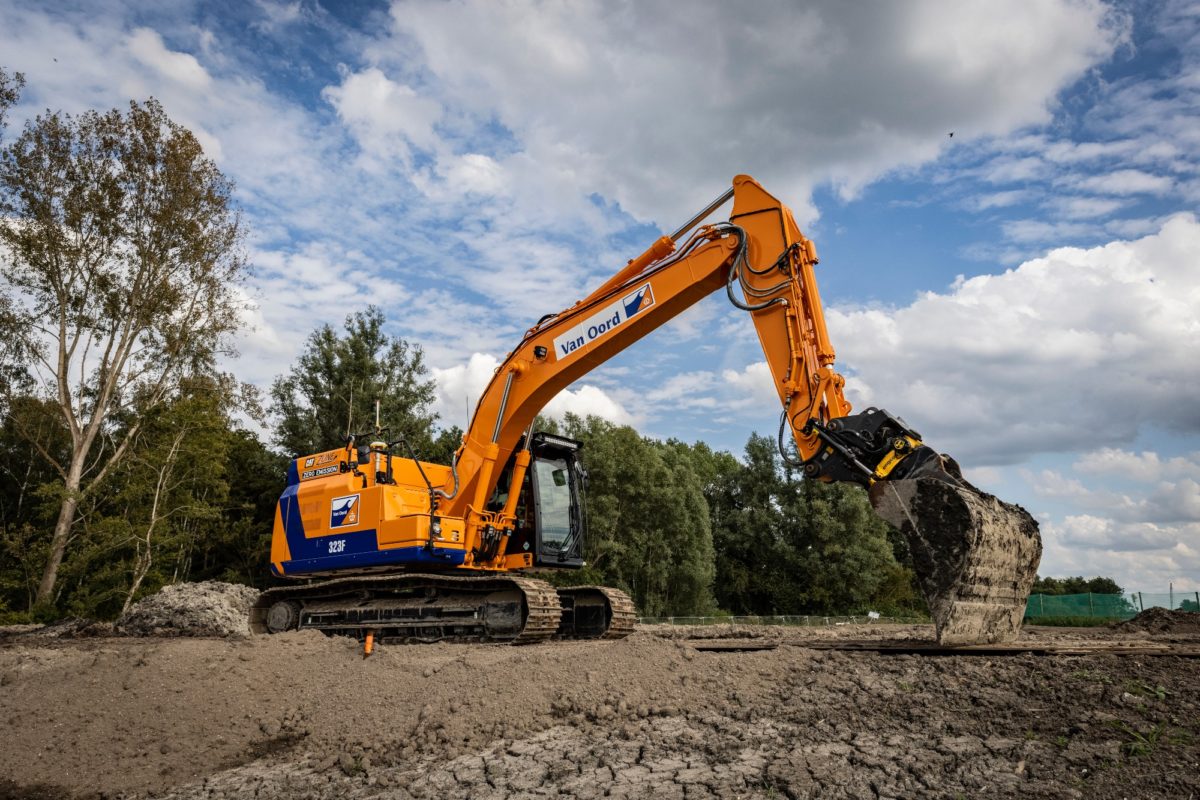In late May 2019, the Dutch Council of State ruled that the existing rules for approving construction projects and nitrogen-emitting farming activities were against EU legislation and, in particular, the European Habitats Directive.
As a consequence, many construction projects were halted in the Netherlands. Plans to cut speed limits and reduce nitrogen emissions by halving the country’s livestock population were also proposed. The farming sector reacted to the proposals with a series of protest rallies, the last of which was held in The Hague in mid-December.
The Rijkswaterstaat – the water management agency of the Netherlands, under the Ministry of Infrastructure and Water Management – reacted to the crisis by launching a €25 million ($30.3 million) plan. Its program was designed to gain knowledge and experience with the use of zero-emission mobile equipment in a wide range of construction activities. The first project in the scheme is the construction of the A16 motorway, which runs from the Terbregseplein interchange in the northeastern part of Rotterdam, toward the Belgian border near Hazeldonk. The focus is on the electrification of the construction equipment.
According to the Rijkswaterstaat, the motorway is being constructed with fully electric equipment, including a 25-ton excavator, a 30-ton crawler excavator, a 16-ton mobile excavator, an asphalt saw, and a 20-ton shovel.
“The machines will run on innovative energy sources, such as a mobile generator based on formic acid, and five hybrid generators with a battery pack and solar panels,” said Stefan van der Voorn, contract manager at Rijkswaterstaat. “The electrification of the equipment is aimed at making the sector greener and this is desperately needed in view of the climate challenge and the nitrogen problem.”
The Rijkswaterstaat did not provide any other details on the solar+storage facilities. Their dimensions should be relatively big, however, as construction equipment requires a large amount of energy. The trucks being used for sand transport and other purposes are being fueled with hydro-treated vegetable oil (HVO), which is a biodiesel produced from residual flows from the food and wood industry that can achieve an 89% CO2 reduction compared to diesel, according to the project developers.
The Rijkswaterstaat added that solar panels will also be used in the future to provide the motorway and its tunnels with electricity. It also plans to install solar panels along both sides of the A37 highway in Drenthe province, as well as on the median strip, to cover 300 hectares in total. The project is part of a plan to build projects on state land, as the domestic PV industry continues to search for alternative surfaces on which to deploy solar.
In July 2017, the agency announced a plan to develop solar on bodies of water and public land.
This content is protected by copyright and may not be reused. If you want to cooperate with us and would like to reuse some of our content, please contact: editors@pv-magazine.com.




1 comment
By submitting this form you agree to pv magazine using your data for the purposes of publishing your comment.
Your personal data will only be disclosed or otherwise transmitted to third parties for the purposes of spam filtering or if this is necessary for technical maintenance of the website. Any other transfer to third parties will not take place unless this is justified on the basis of applicable data protection regulations or if pv magazine is legally obliged to do so.
You may revoke this consent at any time with effect for the future, in which case your personal data will be deleted immediately. Otherwise, your data will be deleted if pv magazine has processed your request or the purpose of data storage is fulfilled.
Further information on data privacy can be found in our Data Protection Policy.